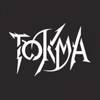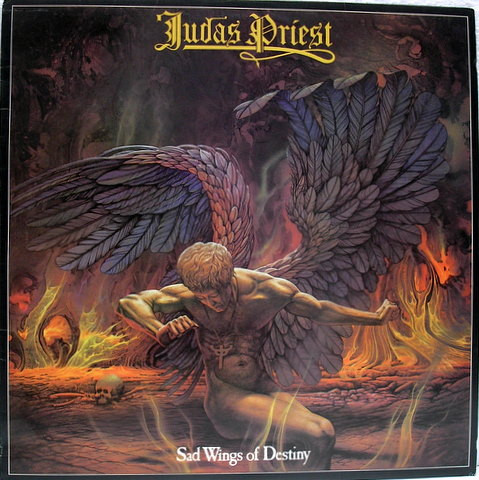„Tyrant“ is the second track from Judas Priest’s 1976 album Sad Wings of Destiny, following the ominous Prelude. This song fully embraces the themes of power, oppression, and rebellion that run throughout the album. Tyrant is one of the band’s earliest explorations into a more complex, narrative-driven approach to heavy metal, with lyrics that reflect themes of dictatorship, tyranny, and the inevitable fall of the ruler.
Overview
At its core, Tyrant conveys:
- The destructive nature of unchecked power and the tyrant’s inevitable downfall.
- The fear and oppression inflicted by the ruler and the eventual rebellion against them.
- A raw, explosive representation of both defiance and doom, captured in heavy metal riffs and soaring vocals.
- A reflection on the cyclical nature of power — the tyrant rises, but their reign is doomed to end.
The song is marked by heavy, driving guitar riffs, high-pitched vocals from Rob Halford, and a sense of dramatic urgency that embodies the oppressive environment the lyrics describe.
Narrative Structure & Themes
1. The Tyrant’s Rise and Power (Opening Lines)
- The song opens with a dark, commanding declaration of the tyrant’s presence:
“You’ve got the power to turn the world around,
You’ve got the might to make a nation fall.”- These lines establish the tyrant’s immense power, with an almost divine sense of control, able to shape the world at will.
- The imagery is not just physical power but psychological control — the power to influence and manipulate the world.
- Themes: Absolute power, domination, superiority.
2. The Tyrant’s Oppression and Reign (Verses)
- The verses explore the tyrant’s oppression and cruelty, detailing how they demand worship and use fear to maintain control.
“Look at the tears, and see the people cry,
They’ll never be free, oh no!”
- The imagery of crying, oppressed people paints a picture of suffering and despair under the tyrant’s rule.
- The lyrics emphasize how the tyrant’s reign ensures the people’s bondage and perpetual fear.
- Themes: Oppression, fear, control, despotism.
3. Rebellion and Defiance (Chorus)
- The chorus delivers a clear message of defiance against the tyrant:
“Tyrant, tyrant, you will die!”- This statement marks the turning point in the song. The repeated declaration of the tyrant’s eventual demise becomes a rallying cry for those who suffer under their rule.
- There’s an immediate sense of hope for resistance—the tyranny won’t last forever.
- Themes: Rebellion, resistance, the inevitability of downfall.
4. The Tyrant’s Fall (Bridge and Conclusion)
- The final section of the song conveys the destruction of the tyrant’s reign, with imagery of their fall from power and the return of freedom to the oppressed:
“They’ll rise again to take your throne,
A tyrant falls, they’re overthrown.”- The tone shifts to triumph as the tyrant’s inevitable demise is depicted. Their once-absolute power crumbles, ushering in a new era.
- Themes: Revolution, fate, the cyclical nature of power, the rise and fall of rulers.
Themes & Symbolism
1. Power and Oppression
- At its heart, Tyrant is a commentary on the corrupting influence of power. The tyrant represents a ruler whose cruelty and desire for control crush the spirit of the people.
- The lyrics suggest that such power is fragile—it’s held together by fear, and when that fear is broken, the tyrant’s rule will collapse.
2. Rebellion and Liberation
- The rebellion against the tyrant is a key theme throughout the song. While the tyrant initially appears invincible, the people will rise up.
- The chorus, with its repeated chant of „Tyrant, tyrant, you will die!“, acts as a call to arms for those suffering under the tyrant’s rule, an expression of hope that one day the oppression will end.
3. The Inevitable Fall of Tyranny
- The cyclical nature of history is explored, where no ruler can maintain power forever. Even the mightiest tyrants will eventually face the consequences of their rule.
- This notion of inevitability is emphasized through the foretelling of the tyrant’s death.
4. The Fate of the People
- The oppressed masses serve as the ultimate symbol of hope. Their suffering, depicted in the song’s verses, is juxtaposed with the eventual victory of the people, reinforcing the idea that justice and freedom will eventually prevail.
Musical & Emotional Impact
1. Heavy Metal Power
- The driving, galloping guitar riffs and soaring high-pitched vocals bring an immense sense of urgency to the track.
- The powerful rhythm section creates a sense of unstoppable force, aligning with the tyrant’s domination and the eventual rebellion against them.
2. Emotional Resonance
- The song blends anger and triumph, creating an emotional journey from the tyrant’s oppression to the hope of liberation.
- The intensity of Halford’s vocals, especially in the chorus, conveys an unyielding sense of defiance, making it a cathartic anthem for fans who feel oppressed or marginalized.
3. Symbolism in Musical Shifts
- The musical transition from verses to chorus mirrors the shift from oppression to rebellion. The riffs grow more intense and the rhythm speeds up, reflecting the tension between the tyrant and the people’s will to fight back.
Legacy & Influence
- Tyrant is widely regarded as one of Judas Priest’s earliest anthems of rebellion and freedom, laying the groundwork for the band’s future exploration of political and societal themes.
- Its themes of power, control, and eventual rebellion resonated with heavy metal fans in the 70s and continue to do so today. The song is a classic example of how heavy metal can address serious social issues while still maintaining the intense energy and emotional engagement typical of the genre.
- The track also showcases the early development of Judas Priest’s unique sound, combining progressive rock influences with raw heavy metal power.
Final Verdict
„Tyrant“ is an explosive anthem about the rise and fall of oppressive rulers and the inevitable revolt of the people. Through its heavy riffs, soaring vocals, and dramatic themes of rebellion, Judas Priest captures the essence of power dynamics and the cyclical nature of tyranny. It remains one of the band’s most iconic tracks, reflecting the early days of heavy metal and the genre’s ability to tell stories of struggle, defiance, and triumph.
A definitive classic in the heavy metal canon, Tyrant perfectly embodies the genre’s ability to explore themes of power, revolution, and the human spirit’s drive for freedom.



